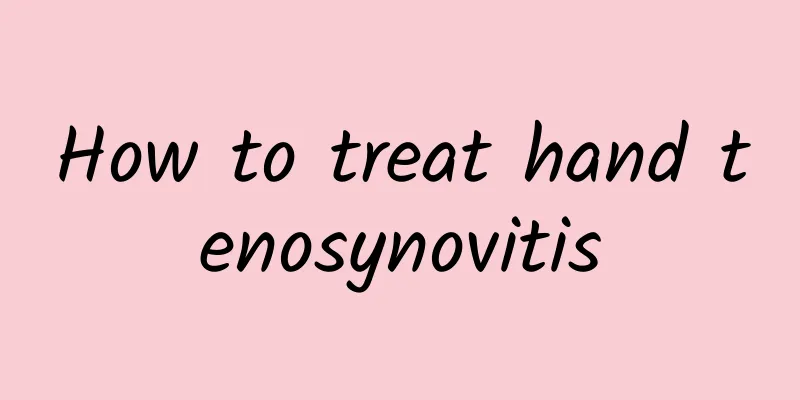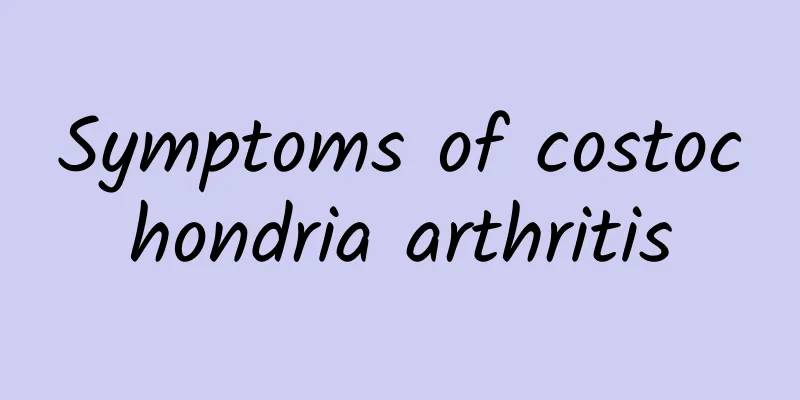How to treat hand tenosynovitis

|
Treatment for hand tenosynovitis includes rest, medication, and physical therapy. The main reason for the inflammation of the tendon sheath is due to overuse or repetitive movements. Patients should reduce hand activities and use nonsteroidal anti-inflammatory drugs such as ibuprofen, naproxen, or diclofenac to relieve pain and inflammation. At the same time, hot compresses, cold compresses, or ultrasound therapy can promote recovery. For severe cases, local steroid injections or surgical intervention may be considered. 1. Rest and immobilization: Reducing hand activity is the key to relieving tenosynovitis. Avoid repetitive movements or overuse of the affected area. Use protective gear or splints to immobilize the wrist and fingers to help relieve the pressure on the tendon sheath and promote the disappearance of inflammation. 2. Drug treatment: Nonsteroidal anti-inflammatory drugs (NSAIDs) such as ibuprofen, naproxen or diclofenac can effectively relieve pain and inflammation. For patients with obvious local symptoms, topical ointments or gels containing anti-inflammatory ingredients can be used. 3. Physical therapy: Hot compress can promote blood circulation and relieve muscle tension; cold compress can help reduce swelling and pain in the acute stage. Ultrasound therapy promotes tissue repair and improves local inflammation through high-frequency sound waves. 4. Local injection: For patients with persistent or severe symptoms, the doctor may recommend injecting steroid drugs such as dexamethasone or triamcinolone into the tendon sheath to quickly reduce inflammation and pain. 5. Surgical treatment: When conservative treatment is ineffective or tenosynovitis recurs, surgery can be considered to loosen the tendon sheath and relieve the pressure on the tendon. Surgery usually uses minimally invasive technology and recovery is faster. 6. Lifestyle adjustment: Avoid using mobile phones or computers for long periods of time or performing repetitive hand movements, and pay attention to the combination of work and rest. Perform hand stretching and strengthening exercises regularly to enhance the tolerance of tendons and tendon sheaths. The treatment of hand tenosynovitis should be combined with the cause and severity of symptoms. Early intervention can effectively relieve symptoms and prevent recurrence. Patients should follow a comprehensive approach of rest, medication, physical therapy, and consider surgical intervention if necessary. At the same time, they should adjust their lifestyle, avoid overuse of their hands, and ensure long-term health. |
<<: Symptoms of severe mixed hemorrhoids
>>: How long does it take to complete lower limb venous thrombosis surgery?
Recommend
The causes of X-shaped legs
The causes of X-shaped legs include genetic facto...
Best treatment for stenosing tenosynovitis
Tenosynovitis is usually accompanied by painful j...
What is the best way to treat breast cysts?
Breast cysts are a problem that many women may fa...
What are the early symptoms of gallstones?
The treatment of gallstones in the early stage in...
How long does it take for perianal abscess to be considered late stage?
Perianal abscess is a condition that needs to be ...
Can I eat soy products if I have breast cysts?
Patients with breast cysts can consume soy produc...
What to do if the elderly have knee pain
Knee pain is a common problem in the elderly, usu...
Can I take American ginseng or other supplements if I have breast cysts?
Patients with breast cysts should be cautious abo...
What are the symptoms of worsening perianal abscess?
Perianal abscess is a common anorectal disease. W...
Tetralogy of Fallot symptoms
Tetralogy of Fallot is a congenital heart defect ...
What to do with ankylosing spondylitis
Ankylosing spondylitis is a common clinical disea...
How to treat neuralgic leg pain
Treatment for neuropathic leg pain includes medic...
Adrenal tumor resection complications
Possible sequelae after adrenal tumor resection s...
How to relieve tenosynovitis
Tenosynovitis refers to inflammation and lesions ...
How to do surgery for urinary stones 2 cm in size
How to perform surgery for urinary stones that ar...









